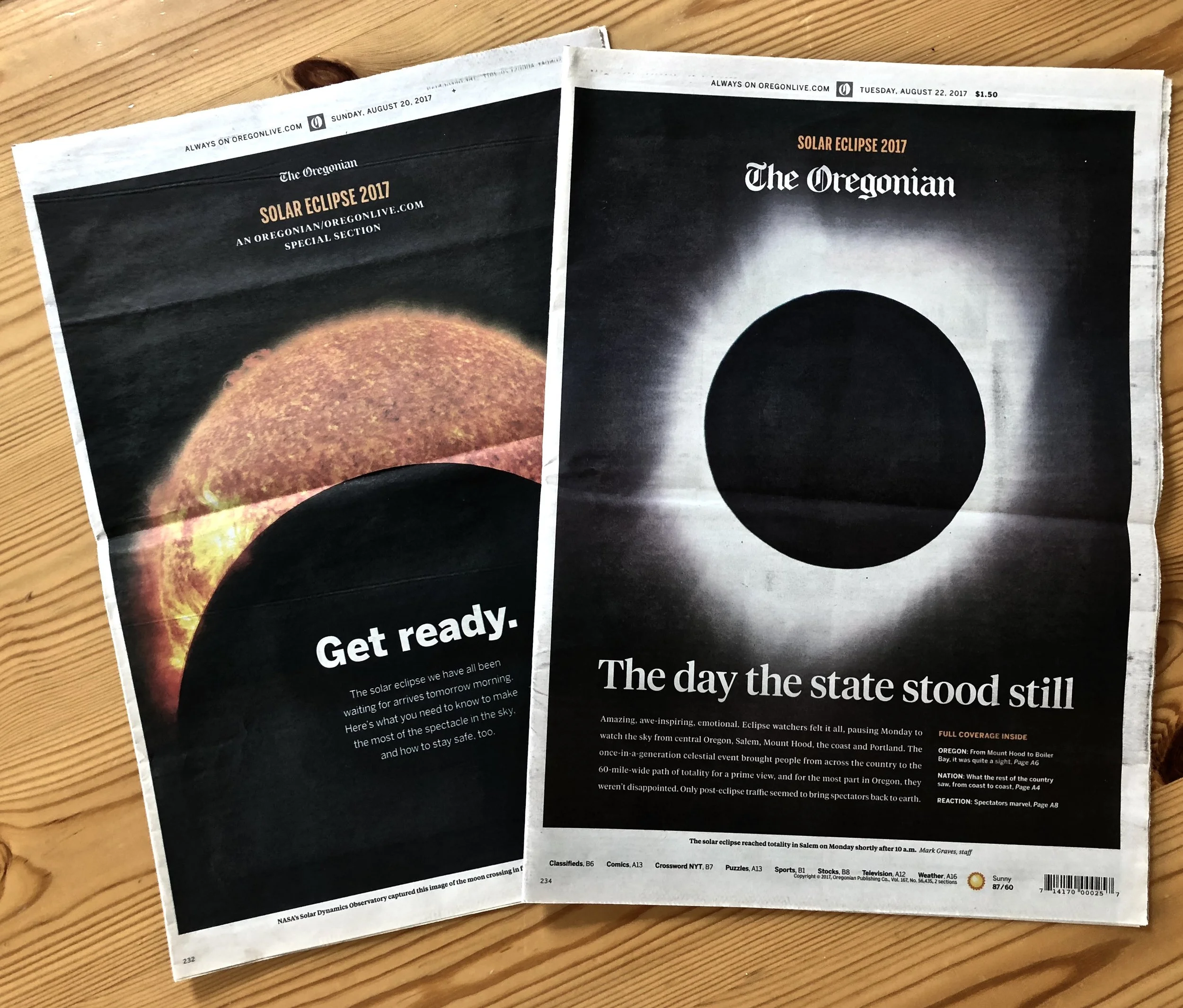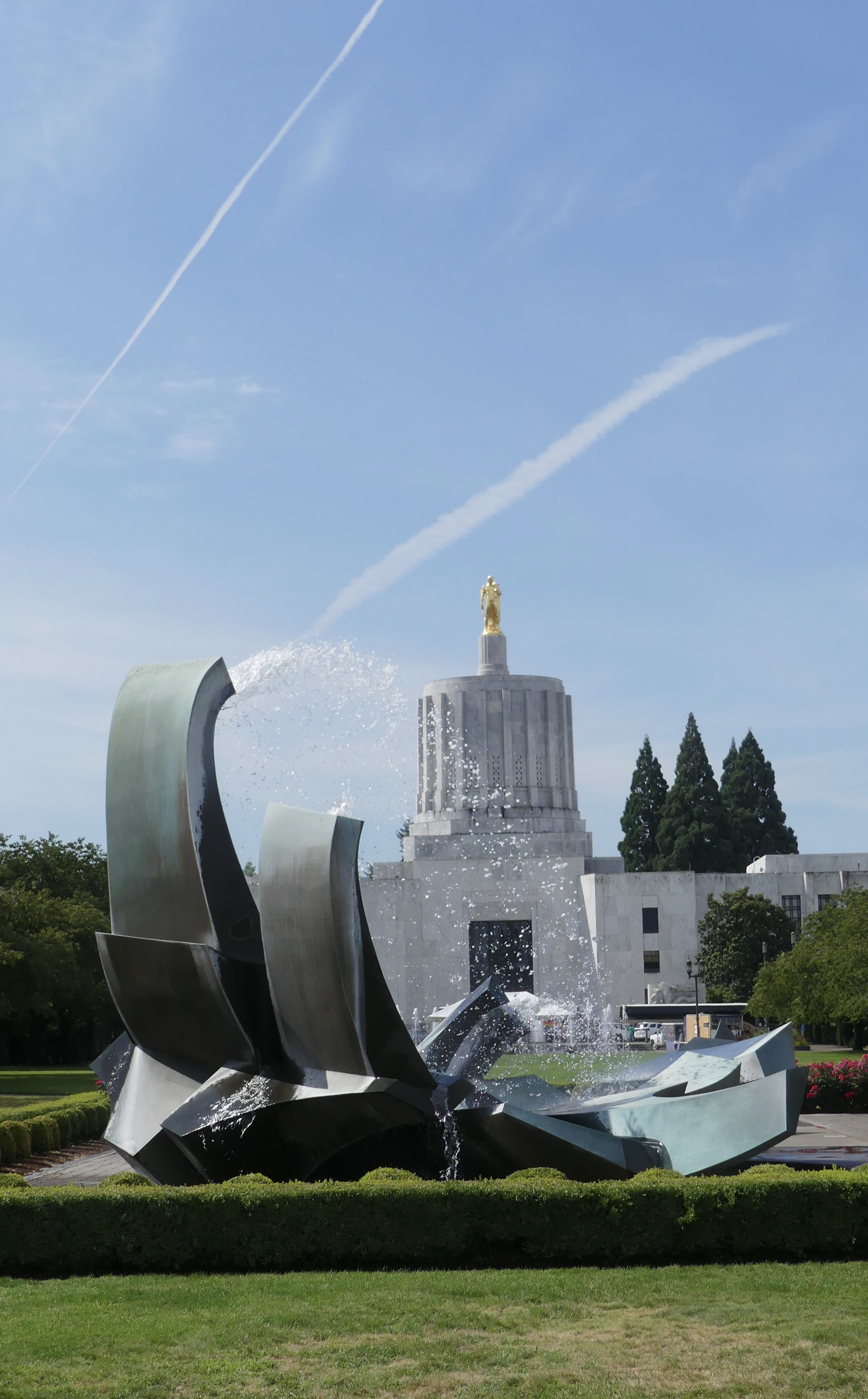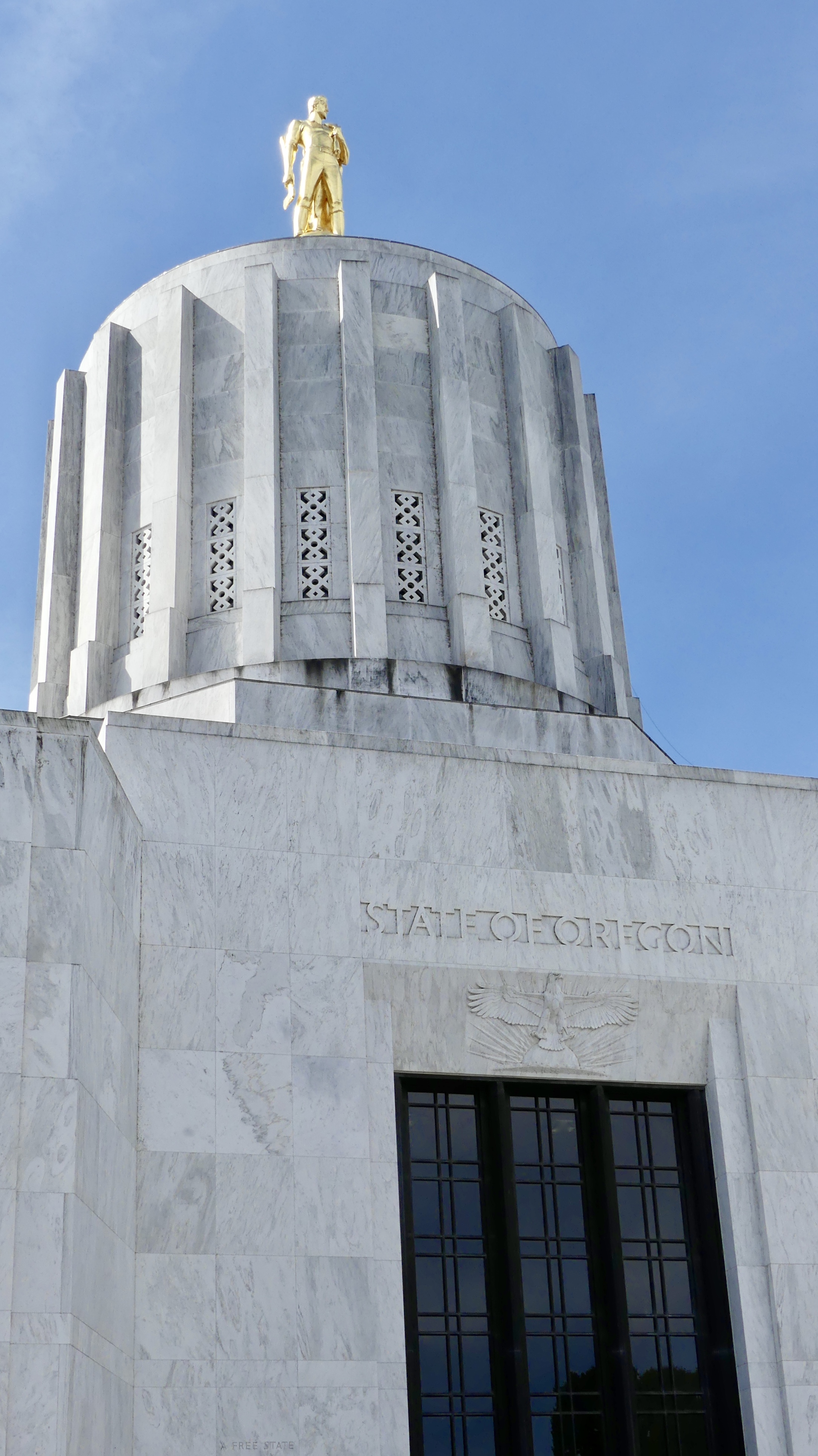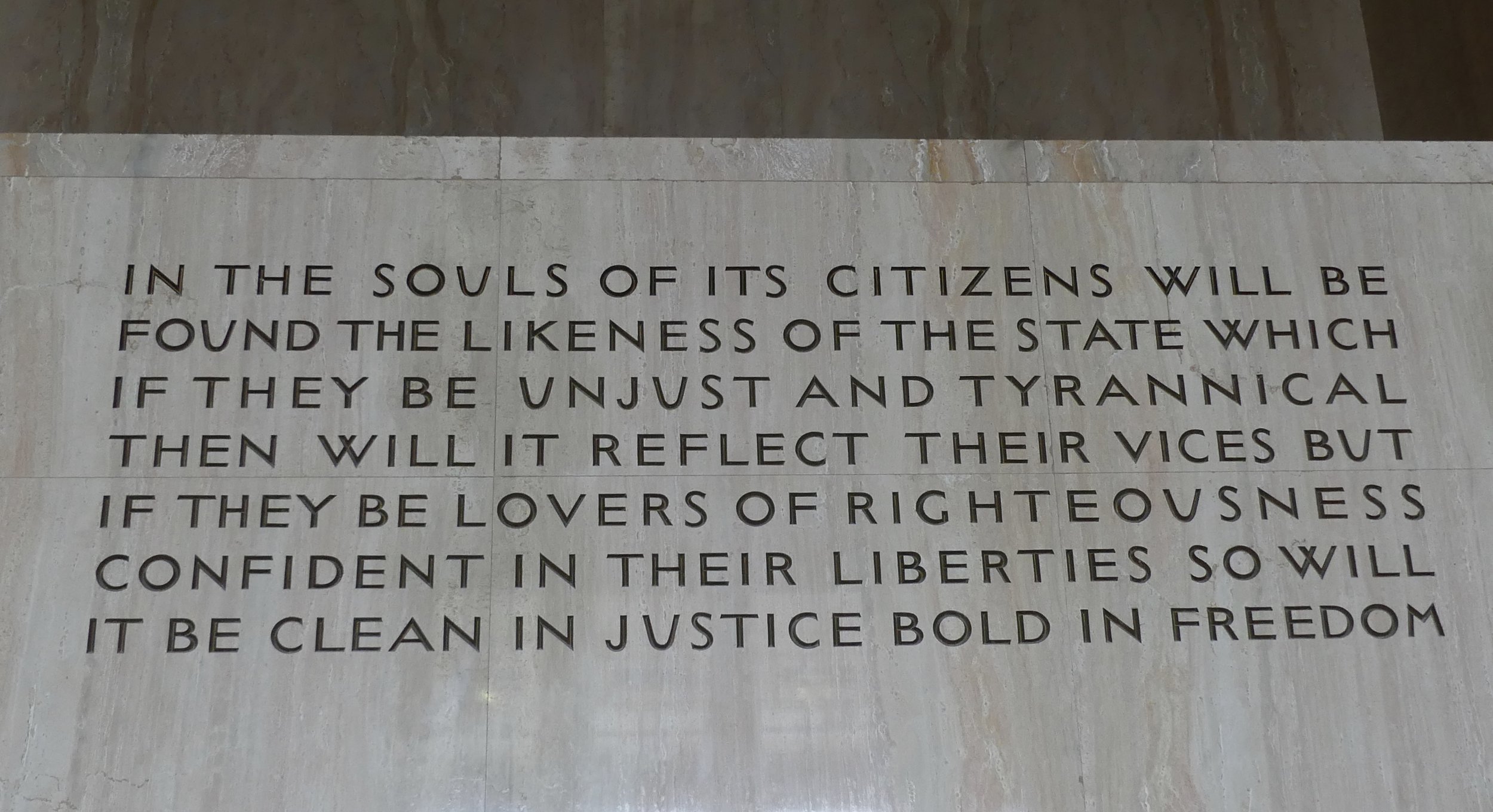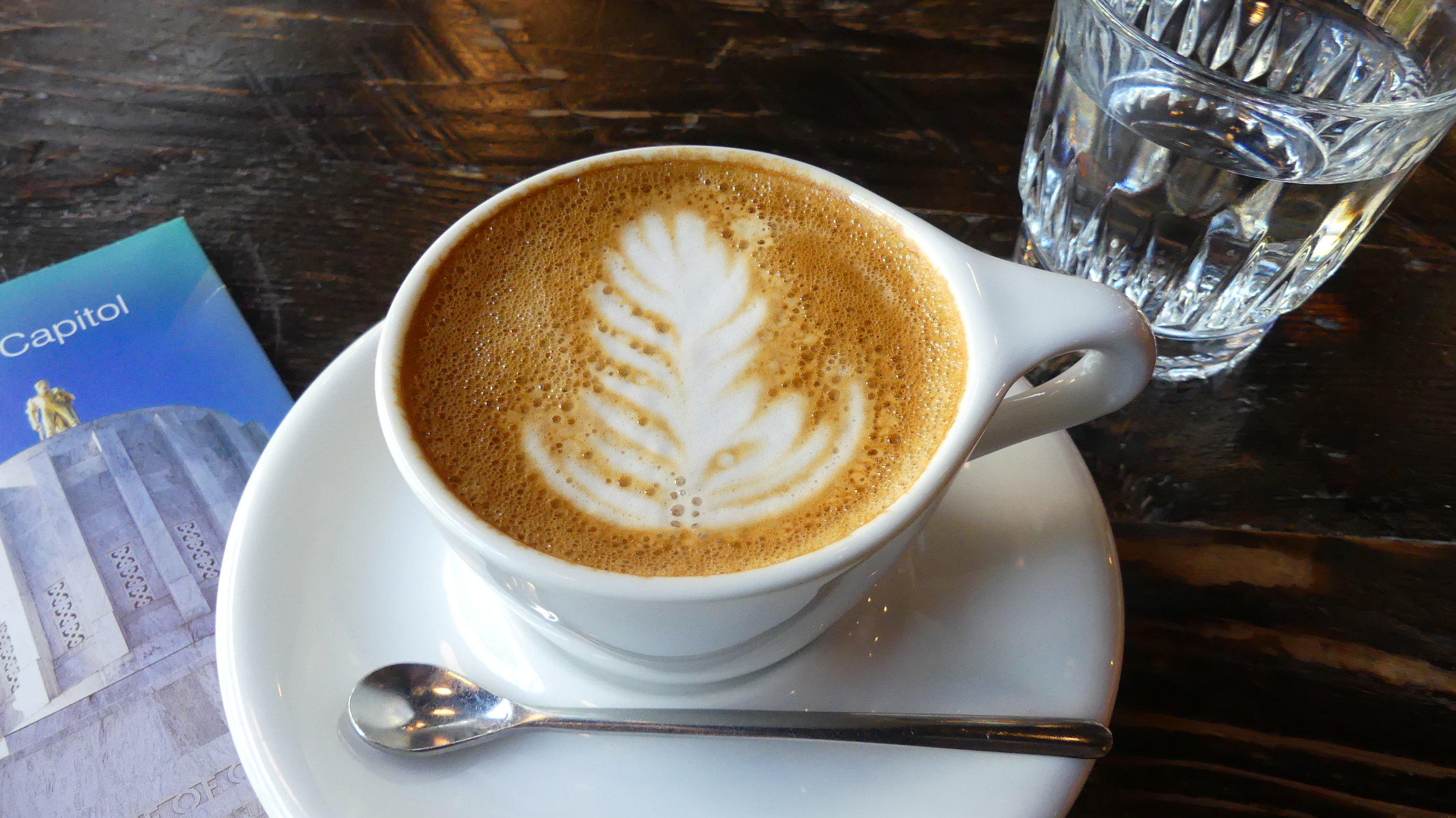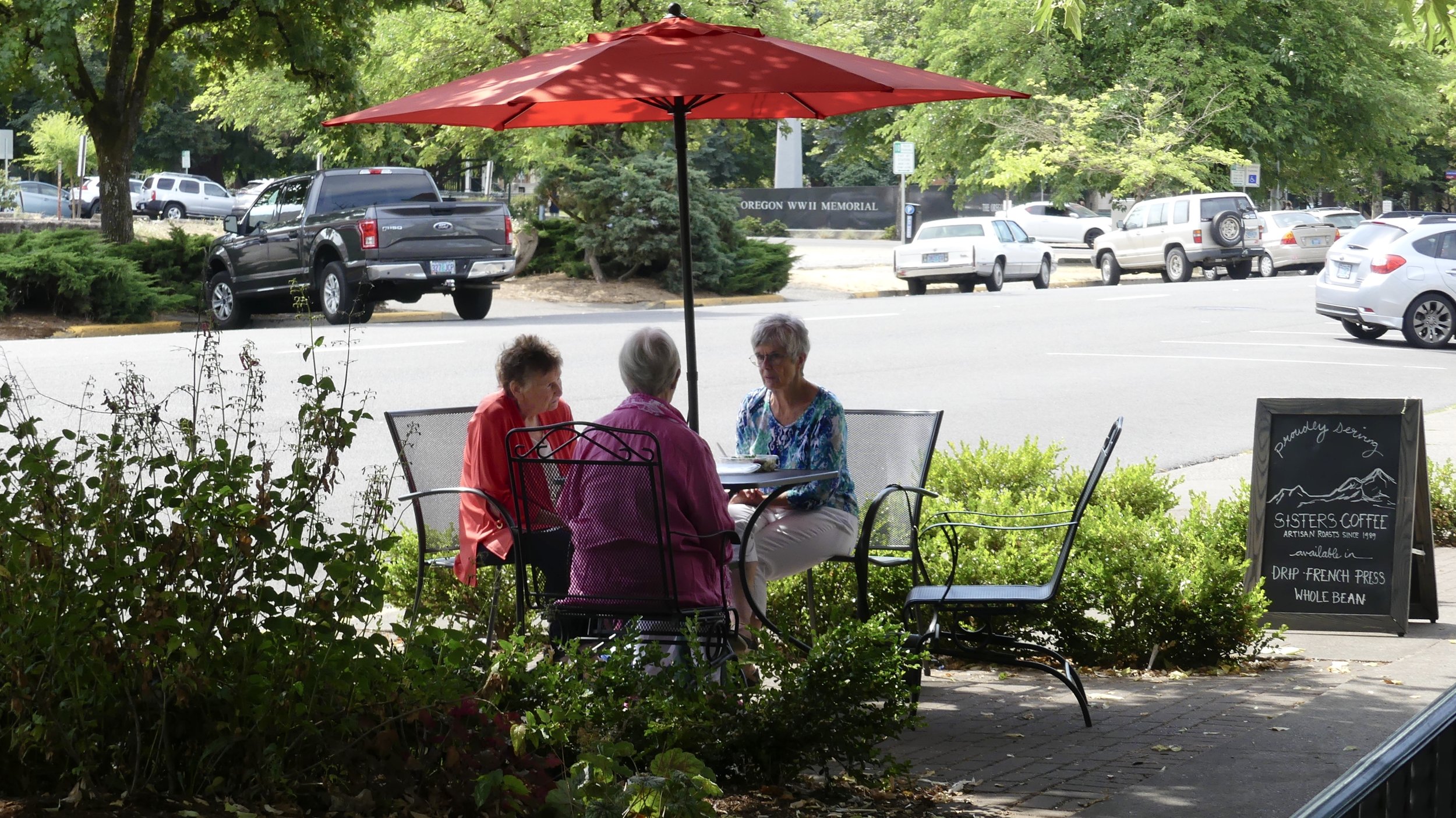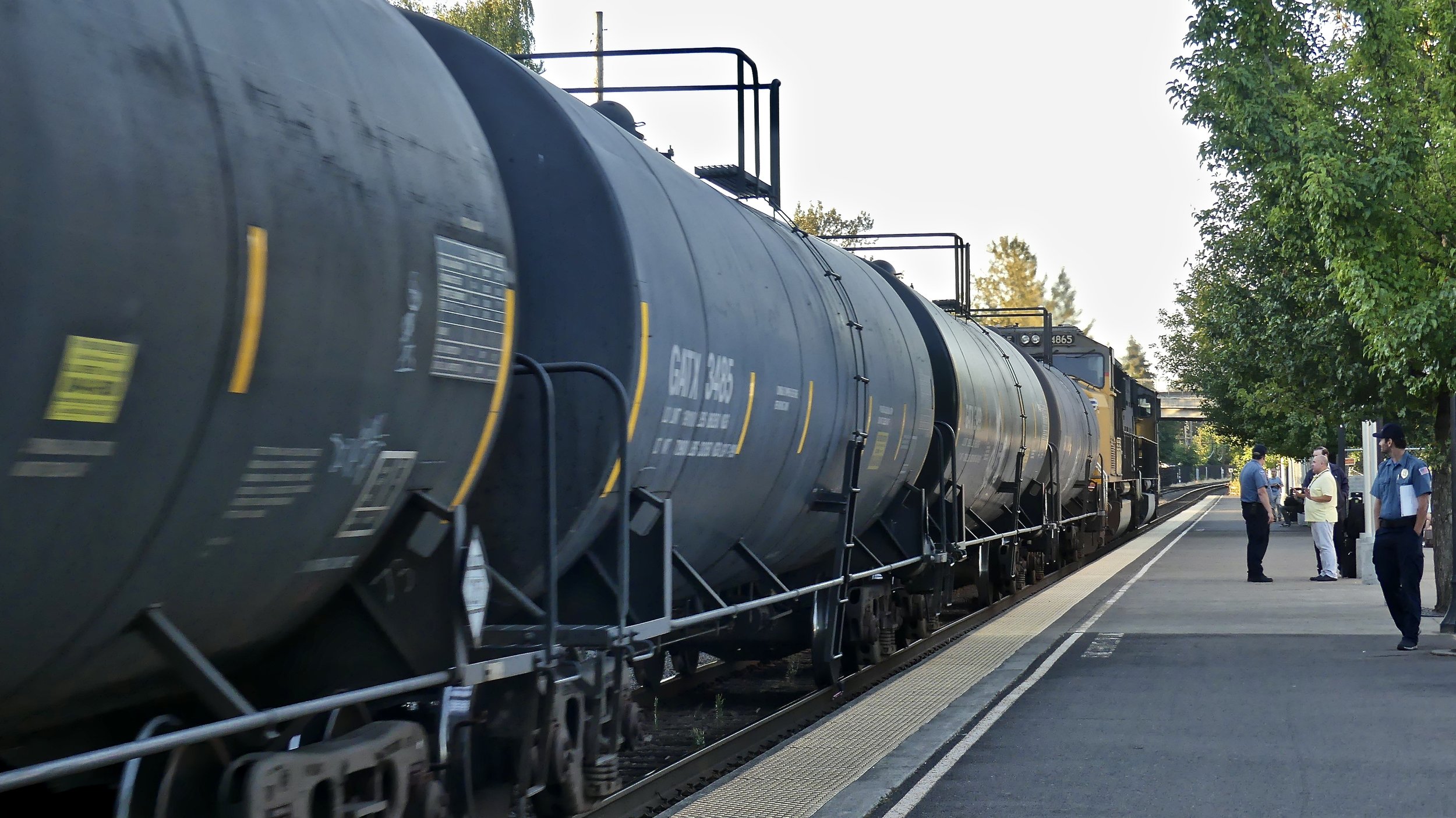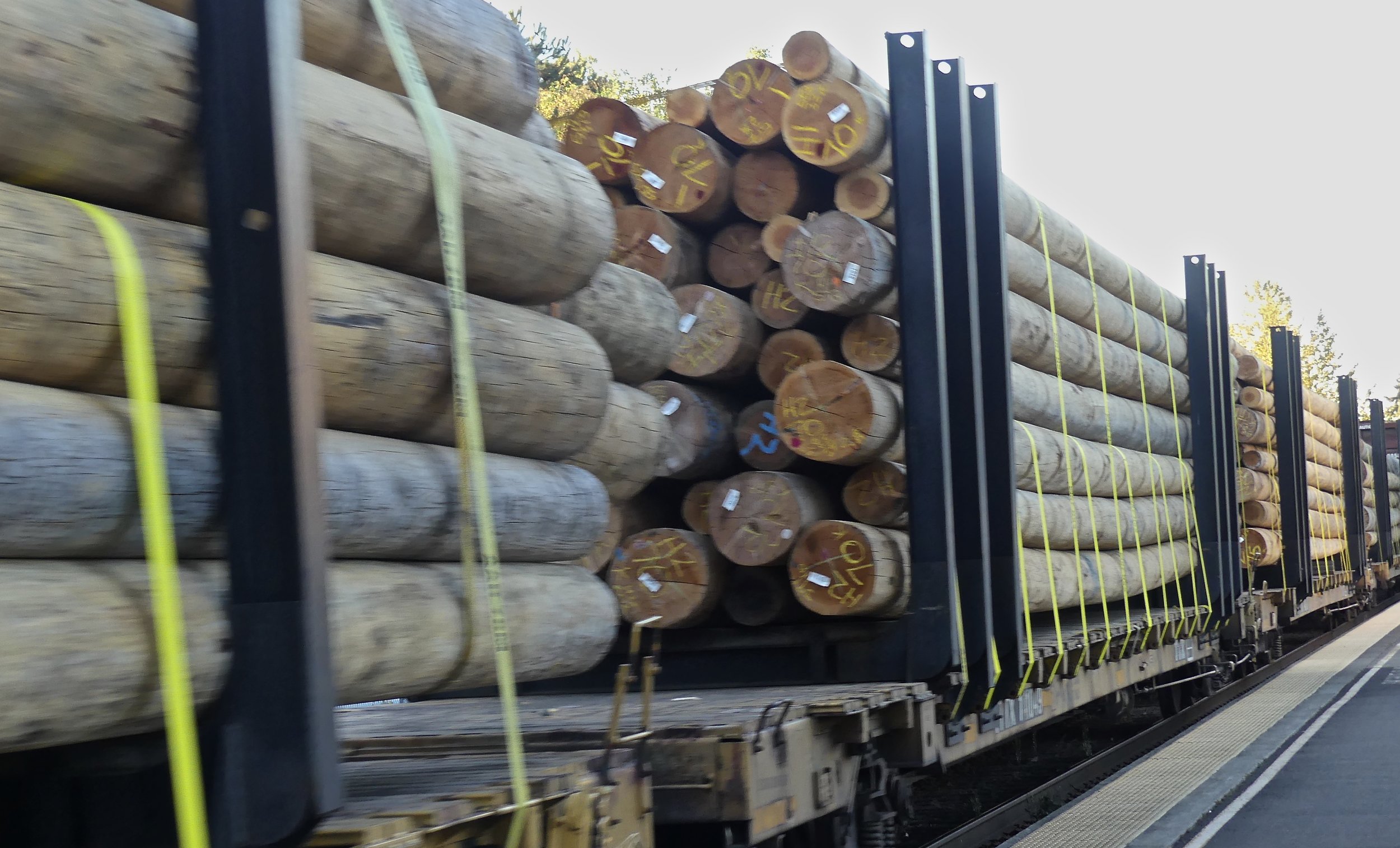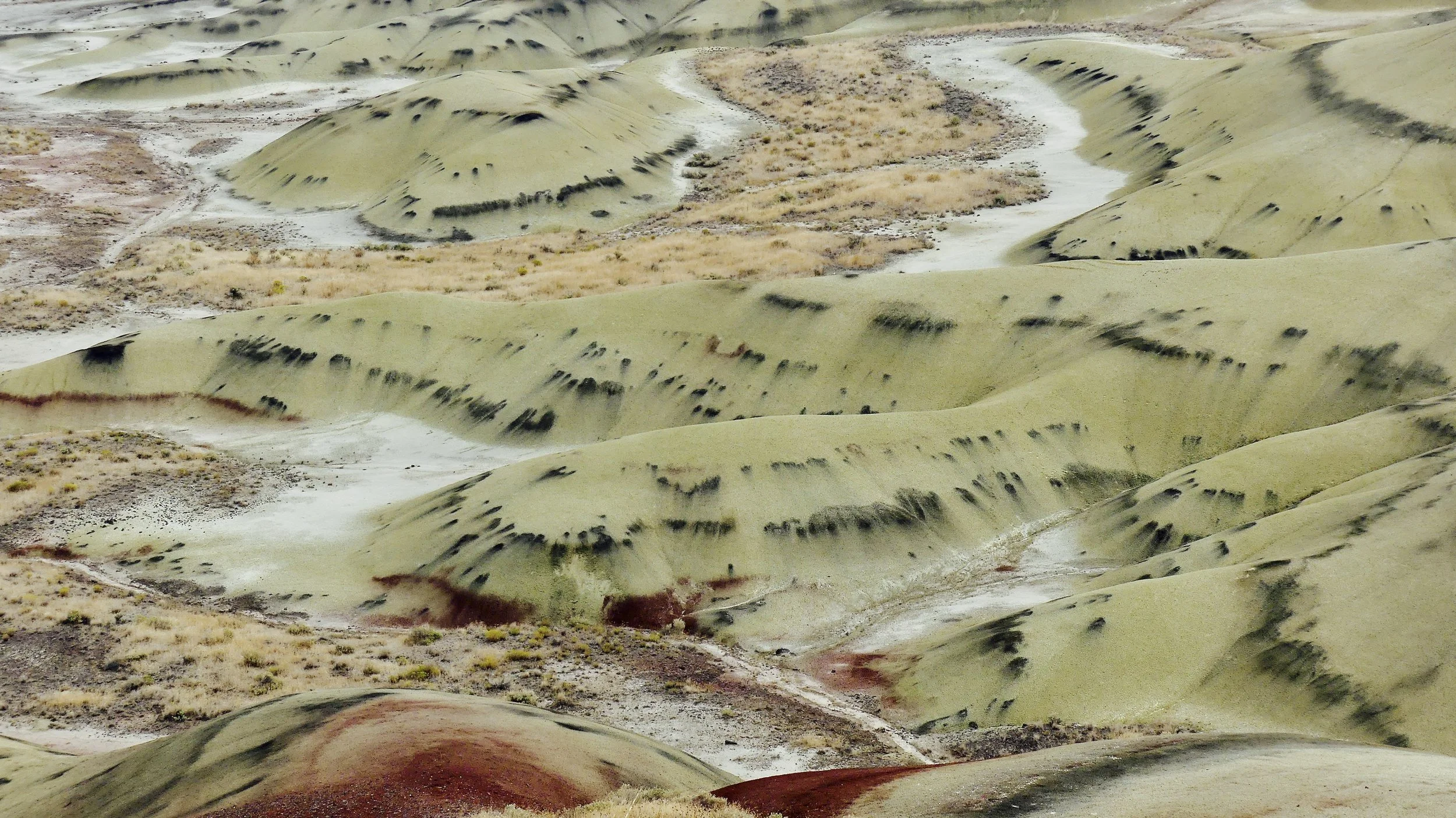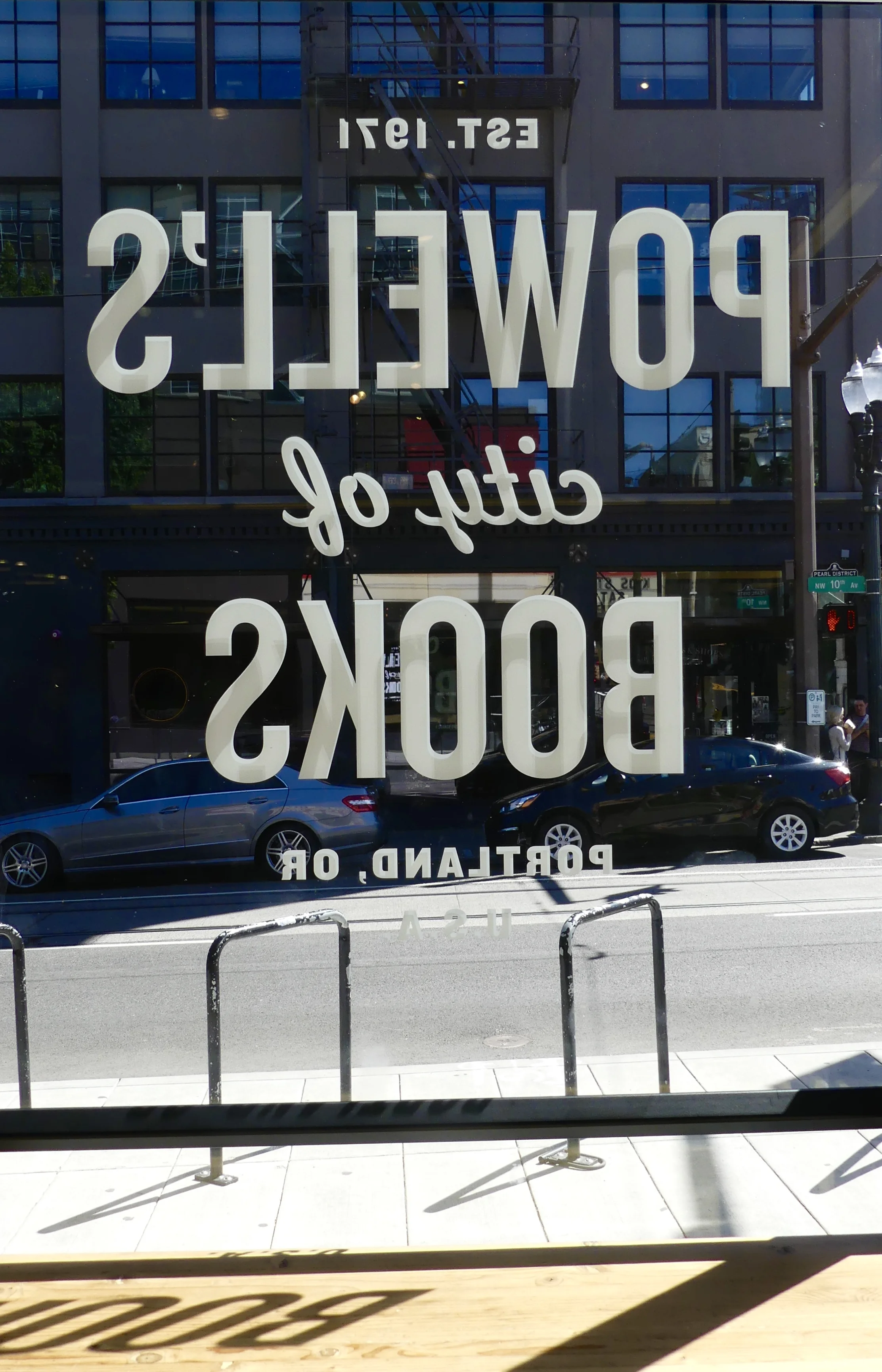A total eclipse of the sun
A total solar eclipse is the greatest show on earth. It's the time you see earth at its most planetary, other than from space. It is a spectacle; an emotional rollercoaster; like nothing else you have ever witnessed. It is an experience beyond words or compare; too beautiful to be adequately described.
In 2012, we had travelled to Far North Queensland for the last total eclipse within range. We stood on an idyllic tropical beach near Port Douglas, where it was partially cloudy at totality. The hopes of years were dashed in less than a few minutes as a large cumulus cloud refused to budge from in front of the star of the show.
The idea of a North American Eclipse Trip 17 came into being shortly afterwards, once I got home and was aided and abetted by a website that identified the regions of the US – the path of totality in 2017 was going to cross the continent from Pacific to Atlantic coasts – most likely to be cloud free for the event. Oregon was the place, although there was no guarantee.
So that's how we found ourselves in Salem, which would have otherwise never been on our itinerary. I had booked accommodation as far back as March 2016, when a Best Western Plus was the only place left with vacancies, and at special eclipse prices, too. It was OK: just off the I-5, and a ten-minute drive from the centre of town; a large bed in a large room with space for splaying suitcases; motel-ly furnishings. I'd originally booked for five nights, when I had no idea where our route would take us, but that was bound to be too long. Five was pared back to three in the final planning stages, by which time many attractions were making demands.
After checking in we had a picnic in our room, then headed off to the region's other big draw: the wines of the Willamette Valley west of the city. This region was for a long time thought to be too cold to produce wine. But then Californian producers led the way by establishing a few vineyards here in the 1960s. Suddenly cool-climate varietals were the answer, and in 1975 a Pinot Noir from Oregon was rated among the top Pinots in the world. The Willamette's claim to viticultural fame had been staked.
Firesteed and my friend and I go back a long way. We took our time in the tasting room, where we sampled a not-half-bad Chardonnay as well as several Pinots. We got chatting to Bob, a Trump-hating Vietnam vet who was still struggling to believe that '60 million assholes voted for him'. Bob recommended other Willamette wineries we should visit.
That night we ate at Amadeus (135 Liberty Street NE). The aircon was up way too high so my food soon got cold. They tried to serve my mains before I'd finished my starter; and my salmon fillet was undercooked. If you're going to mess around with cooking salmon, then at least ask punters how they like it, as you would with beef. There were no signs of eclipse crowds in town – I'm not sure how I would have recognised them as such – although parking spaces were scarce.
The following morning we went in search of breakfast and Salem's best coffee shops. First up was Broadway Coffeehouse (1300 Broadway Street NE). They didn't do breakfast – so we shared a soggy blueberry muffin – but they taught us how to pronounce Willamette: the accent is on the 'a'. We headed further into downtown and went next to Archive Coffee & Bar, opposite Amadeus, at 102 Liberty Street NE. Our coffee exploration more or less finished at Archive, where we returned several times, although we invariably had to queue.
Next up was the State Capitol Building, which sits in Wilson Park. This is mark 3, the first having burned down in 1855, and the second in 1935. The present building was completed in 1938. It is faced with white Danby Vermont marble, and on top of the Rotunda stands the Oregon Pioneer, a 23-foot-high gilded statue that gleams magnificently in sunshine. He faces north but looks to the west. Perhaps he's committing to memory the date each state entered the Union, as commemorated by the Walk of the Flags, or pondering wise words set in stone.
State of Origin… er… Oregon
Detail from the Art Deco front door
The area's first European visitors came in 1812: they were animal trappers in the fur trade. Permanent settlers – in the form of Methodist missionaries – arrived in 1840, and a town grew up within four years. The Methodists also had a hand in founding the Oregon Institute in 1842, reputed to be the first school for European Americans west of Missouri, and forerunner of the University. Salem was incorporated as a city in 1857, and became Oregon's state capital in 1859.
We walked on to Riverside Park, where there were many people and much preparation, although whether it was for a concert or an eclipse party we were unsure. I tried to take a better picture of the Willamette River, but failed. There was just the one bird. And a smart carousel.
On the way back into town the buzz at Wild Pear Cafe lured us in for lunch, and the best BLT in a while. By now, I was beginning to feel at home in Salem. Who could fail to like a place that gives a bank such a wonderful name?
That night we ate early at the Best Little Roadhouse (1145 Commercial Street SE), which was better than I'd anticipated. While eating our grills we tried to fathom American football on the screen nearby. I think it's rugby with helmets essentially, but I couldn't be sure. Afterwards, we gravitated to Archive for a glass of wine and made a startling discovery. There was a speakeasy in the basement. We had to be escorted downstairs by a member of the waitstaff. Having been an American Studies student once upon a time, I was enormously excited about my first speakeasy, but the main bar was full and we didn't fancy being Billy No-Mates in an adjoining room.
Smell the smoke; feel the furtivenesss
Finally, the day dawned. The day of an event we'd travelled round the world to see. I'm surprised I slept, although the forecast was still reassuring, the hordes didn't appear to have materialised, and we had a plan. We'd decided the day before to enjoy the experience with others; to park at the station and walk from there to the grounds of the Capitol.
We checked with a railway employee if that was OK, and we also asked him when the next train was due. The unmistakeable horn of an American train could be heard in the distance. It was almost 7. A freight train was due. We had time to wait. The excitement! It went through at quite a lick: too quickly, it could be said. And was definitely said about the phenomenon we were to observe in a couple of hours' time.
The shadows were still long and the grass dewy where crowds – but not millions – were gathering in front of the Capitol. We took up position at 07:14. A sense of anticipation was building, as were numbers. A funny little man constantly practised his photography skills while providing a running commentary on his phone, presumably to someone who cared.
It wasn't long before we greeted the sun. The pictures above and below were taken at 07:52.
Partiality, or first contact, began at 09:05:26. It wasn't immediately obvious, but as the smallest chink was first detected at one o-clock on the disk, people cheered, making the most of what for many might be a once-in-a-lifetime experience. I first noticed a bit of a chill at about 25 per cent coverage. Shortly afterwards, crows started home to roost. Still the Oregon Pioneer looked away, at 10:12, only five minutes before totality. We wondered how much people had paid to watch from the top of the Rotunda.
In 2012, I took a whole raft of photographs that were missing the main attraction. This time, I decided to do the opposite. I wanted to be aware of the dimming light and its increasingly metallic character; to feel the temperature dipping; to watch the increasing size of the bite out of the sun; and watch confused birds heading off to roost even though they'd only been up a couple of hours. At totality, I was going to attempt to photograph the sun, immediately, once on my phone and a couple of shots on my camera. For the rest of the just-under-two-minutes I was going to enjoy the spectacle, but not through a camera lens. Only that way could I be sure to see the Diamond Ring Effect, my ultimate goal.
In 2017, the remaining light suddenly reduced rapidly, and the last flaring sliver of solar surface was snuffed out. The crowd whooped and cheered some more. I quickly took my three photographs, threw the cameras down on the rug and stared for what was left of 1 minute and 56 seconds at a black planet with its glorious halo. And I stared on behalf of the lady who introduced me to astronomical things and was the inspiration for this pilgrimage.
There is no way I can hope to follow this.

